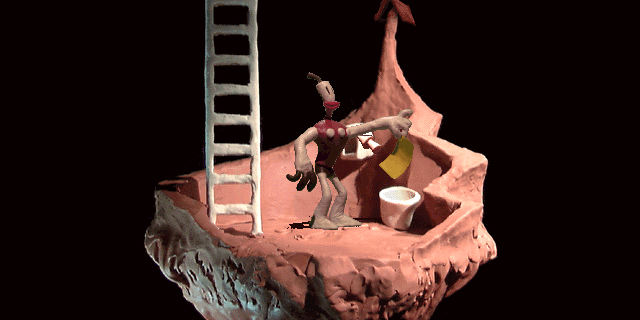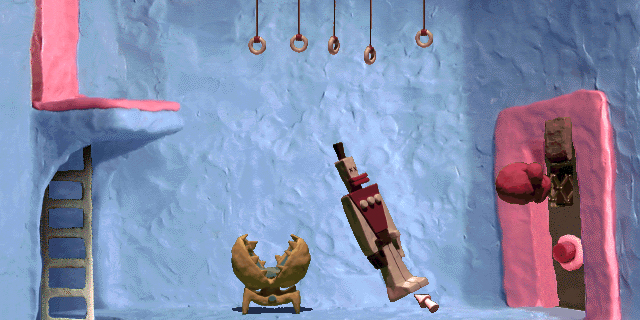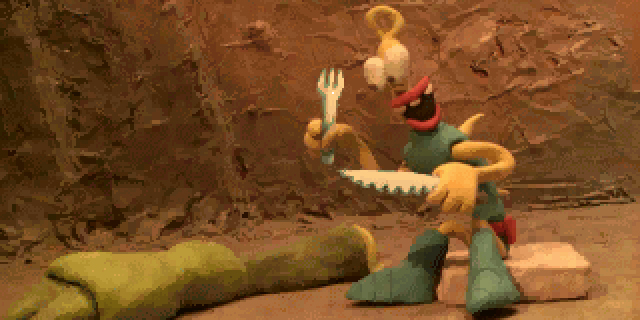
It’s a wonder that The Neverhood managed to exist in the first place. A claymation point-and-click adventure by Earthworm Jim creator Doug TenNapel, it’s one of those games that reek of commercial failure. But the financial prospects didn’t faze Steven Spielberg, who of all people decided to fund the game.
Artistically, the money couldn’t have been better spent.
The Neverhood is Myst, or at least Myst as understood by the mind of a crazed animator. Gone are the seriousness, the mental aspects and the first-person view. The Neverhood is silly, absurdist and as much of an opposite as an evil twin can be, taking some of the same influences but turning them on its head.

Without any given preconceptions, ideas or goals, the player is thrown into a world of plasticine. There’s no real inventory, and dialogue is rare. Everything looks weird, and I’ve yet to find a straight angle. But the moment you exit the starting room using a giant mallet and get eaten by some kind of pet-plant just seconds later, any discomfort quickly turns into laughter.
The game is aware of it, and every room and puzzle has a trick to it. Sometimes it’s subtle or a funny wink, while others, like the scene where you blow up a monster with dynamite, seems an homage to the best of Tex Avery and Bob Clampett. The designers had fun making this game and want to transmit that feeling. They didn’t care about rocking the world and breaking records in sales; they wanted to work on what they really loved.
The Neverhood is one of the few games in which the visual component isn’t taken for granted. Even though the industry is increasingly focused on grandiose scenarios and creating the perfect set piece, these attempts often fail on the basics: set design, lighting, composition, the character’s movements. Everything on the screen has a reason and a place to be, and that makes you feel drawn to the world more naturally. There are dozens of examples, but nowhere is it more important than here.

Beyond the laughter and the direction of artistic assets, the game also packs a very well-done story in the vein of the Fall of Man. It’s a story about “good and bad” according to one of The Neverhood’s deranged characters, with Gods, creation and the player in the middle of it all. The developers really went out of their way with this one ,and while I don’t blame anyone for not being interested in so much reading, the whole of it can be found in-game.
Rounding out the experience is a quirky soundtrack by Terry S. Taylor, which is every bit as strange and silly as the rest of the package. A mixture of sound effects, funny scat singing and horns, it’s one of the most fitting background playlists I’ve ever heard in any video game in years. It’s nothing like I’ve ever seen, and it’s so tied to the overall product that I can’t imagine the game without it.
The Neverhood could have been considered a fluke in a very risk-averse industry, but newer crowdfunding alternatives have brought back its creators together to make a spiritual successor, Armikrog, which is in its last few days of its Kickstarter campaign. If it succeeds, it may bring a rekindled interest in its predecessor, paving the way for a much-needed potential digital version.



















